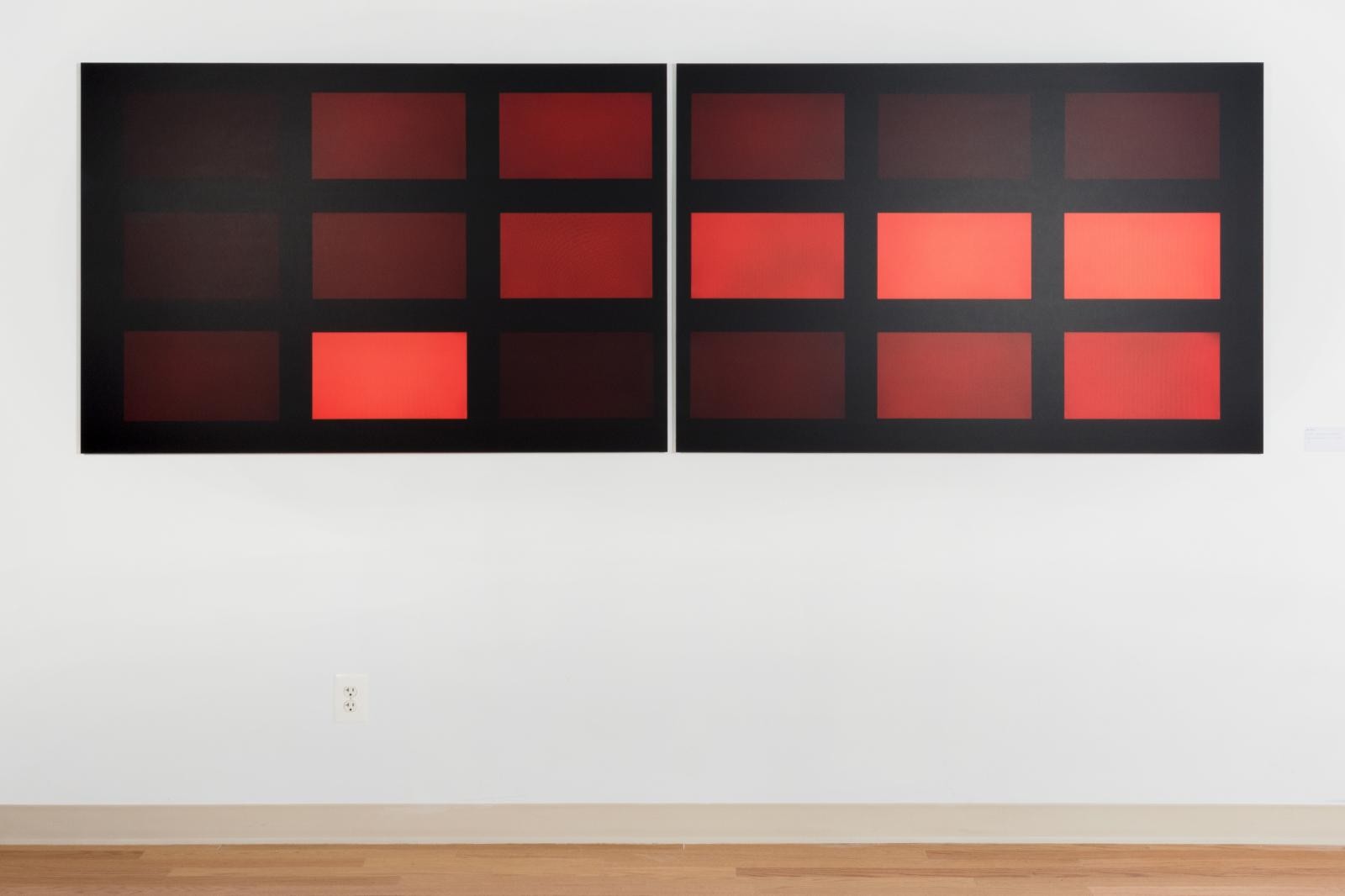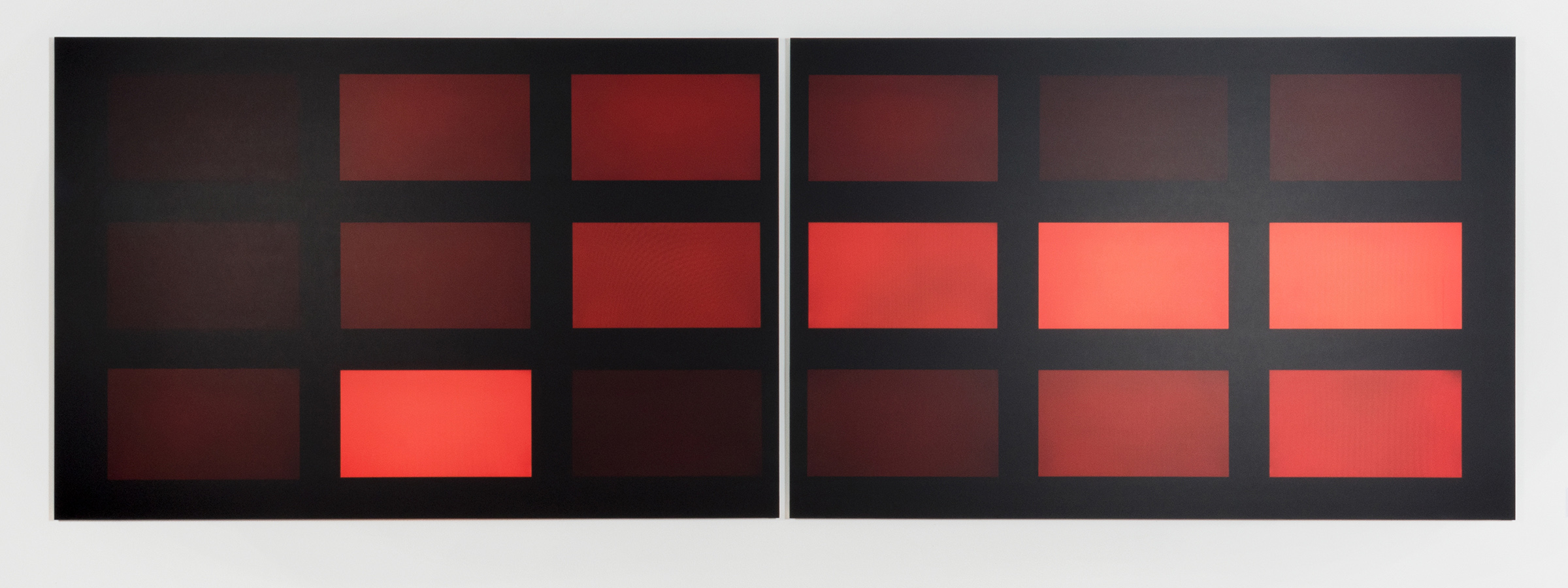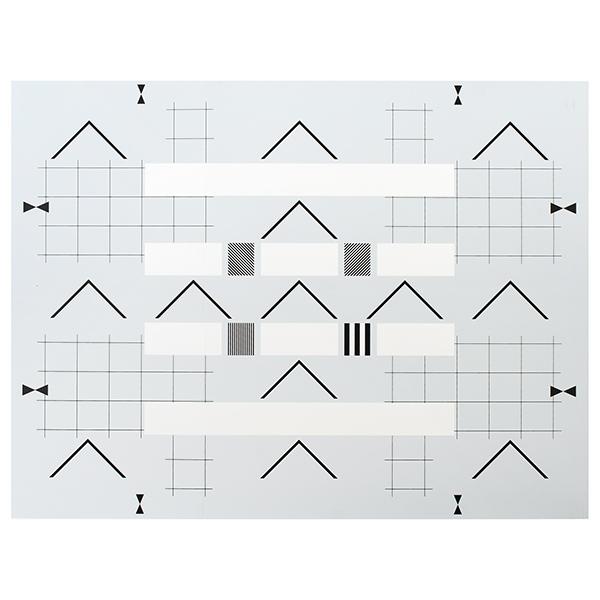My research and creative practice explores and exploits the intersections between analog and digital cultures. In order for (visual) content to shift between digital and analog media, a series of translations – changes in content – and transliterations – changes in structure – must occur.
About the Artist
Initially trained as a photojournalist, Jon Malis is an interdisciplinary artist investigating the representation and display of visual content, focusing on how various methods of presentation and production can alter the viewer’s perception, interpretation, and experience of photography and visual culture. His current works seek to provide a physical definition of digital photography, creating images and sculptural forms based upon how computer color and digital processing unconsciously transforms imagery. He has received numerous awards and recognitions such as the National Photography Award from the von Lebig Art Center (Naples, FL), DC Commission on the Arts & Humanities Artist Fellowship grants, semi-final nominations for the Lumen International Prize in Digital Art, Janet & Walter Sondheim and the Trawick prizes and a Panavision New Filmmaker's Grant. His work has been exhibited extensively in the Washington, DC region, nationally, and internationally; reviewed in the Washington Post and Naples Daily News; and featured on Maryland Public TV and PBS. Recently, he has participated in residencies at the Vermont Studio Center, Otis College of Art & Design (Los Angeles, CA) and the Slade School of Art in London. As an academic, he melds his research into the classroom environment, challenging his photography students not just to understand what they’re taking pictures of, but to understand how their work is viewed. He currently holds an appointment as an Associate Professor of Photography at Loyola University (Baltimore, MD). Formerly, he has worked as a freelance cinematographer and producer for narrative and documentary film/video productions, and was a staff photojournalist for ThisWeek News/Columbus Dispatch Publishing Company, and the Piqua Daily Call newspaper. Additionally, Malis owned and operated TUBE Studio, which provided digital photographic printing, display, production and consulting services for artists and photographers. He received a Master of Fine Arts in Film & Electronic Media from American University in 2011, and a Bachelor of Arts degree in Studio Art from The George Washington University in 2007.Artist's Statement
The advent and proliferation of digital technologies have rapidly changed and challenged our notions of viewership and engagement, and as a first-generation product of this current digital age, my interests follow my upbringing in a bridged analog-digital culture. How are images captured in the analog and digital domains? How can the camera itself influence what it records? How does technology alter the viewership experience? Is the color “red” that I see on my iPhone’s screen the same “red” that is seen on a desktop computer in Moscow? Where did a certain memory take place, and is it remembered as fact or fiction? Who tells the stories we remember, and how are they documents for future generations? As I focus on my personal experiences with analog and digital technologies through the capture, presentation and storage of imagery (data), my creative research and practice addresses these questions amongst the larger issues of developing an understanding that what we see might not be how we see it. When images are converted for presentation on the Internet, the amount and vibrancy of possible colors is greatly reduced in an effort to compress file size and promote greater compatibility amongst a wide range of viewing intents. In the quest for interoperability and speed, what is lost in the translation? Similarly, how can digital color be visualized – so that the viewer can see and understand what colors can, and cannot, be digitally translated? Photographic test charts are used to confirm that colors match the scene in which they’re captured. Calibration charts are used similarly, to ensure that the camera and lenses are performing to their maximum ability. But what happens when these charts become obsolete – many have expiration dates stamped into them, and others come with “use by” recommendations – is “red” from a 1950’s photographic card still as “red” as a 1980’s TV test chart? Does a contemporary lens need to resolve to the maximum power illustrated in a test chart from the 1960’s? Patterns, shadows and imperfections mar the supposedly blank surfaces of slide and movie projection screens. No longer are the optically flat surfaces sterile for displaying intended content, but instead, become physical landscapes of ripples, shadows, stains and tears that characterize and present the image in a unique light. How are we, as the viewer, informed by the context, location, architecture, and environment where we view (contemporary) art? These, and many others, are the questions I pose with my creative research and exploration. While I am heavily influenced by the photographic image (and my earlier profession as a photojournalist and editorial photographer), my work does not solely live as photographs. Rather, I’ve found that as our cultural definitions of photography expand past the traditionally associated flat 2-dimensional image, my work as an artist adapts and responds through a myriad of digital, physical and tactile approaches. Whether a photograph, sculpture, 3d print or site-specific installation, the concepts of my inquiry are rooted in the notions of light, shadow, and image.Featured Work
Photos

![Exhibition view of from "Transcolorations" (2018) @ BlackRock Center for the Arts, Germantown, MD.
L-R: AllColors RGB (Left & Right Views) [2x Chromaluxe Panels, 36" x 12.75" (ea)], ProPhoto RGB [3d Printed Bronze Sculpture, 11.25" x 11.75" x 3.5"], Inkpress Lustre/Epson 4880 (Default Perspective View) [Chromaluxe Panel, 40" x 41.75"]](/sites/default/files/styles/optimized/public/artist_work/images/Malis_Transcolorations_Installation06.jpg?itok=uP7hkK0f)
![Exhibition view of from "Transcolorations" (2018) @ BlackRock Center for the Arts, Germantown, MD.
L-R: ProPhoto.icm, EktaSpacePS5.icc, ACEScg-elle-V2-g10.icc [c-type photographic prints, 11x14 (ea)], DonRGB4.icc, Inkpress_Lustre_TALBOT_201309_JDM.icc [c-type photographic prints, 24x36 (ea)]](/sites/default/files/styles/optimized/public/artist_work/images/Malis_Transcolorations_Installation14.jpg?itok=wEIv7Edq)
![Exhibition view of "Base Landscapes" (2015) @ Vox Populi, Philadelphia, PA.
L-R: K-mart Focal, Kodascope Screen No. 0, DaLite Silver Flyer, Radiant, Bell & Howell Complete Movie Outfit [all Digital Pigment Prints mounted on Dibond]](/sites/default/files/styles/optimized/public/artist_work/images/Malis_Vox_2_20150424-IMG_8688.jpg?itok=HL_eoJ4O)
Featured Work: Photos
18 Reds, From My Teaching Classroom
(2) Digital Pigment Prints
2018
Composite photograph of 18 computer monitors, each individually programmed to display "solid red". Exhibition image from "Charts & Records" (2018) @ Julio Fine Arts Gallery, Baltimore, MD.
Transcolorations (exhibition view)
2018
Exhibition view of from "Transcolorations" (2018) @ BlackRock Center for the Arts, Germantown, MD.
L-R: AllColors RGB (Left & Right Views) [2x Chromaluxe Panels, 36" x 12.75" (ea)], ProPhoto RGB [3d Printed Bronze Sculpture, 11.25" x 11.75" x 3.5"], Inkpress Lustre/Epson 4880 (Default Perspective View) [Chromaluxe Panel, 40" x 41.75"]
Transcolorations (exhibition view)
c-type photographic prints
2018
Exhibition view of from "Transcolorations" (2018) @ BlackRock Center for the Arts, Germantown, MD.
L-R: ProPhoto.icm, EktaSpacePS5.icc, ACEScg-elle-V2-g10.icc [c-type photographic prints, 11x14 (ea)], DonRGB4.icc, Inkpress_Lustre_TALBOT_201309_JDM.icc [c-type photographic prints, 24x36 (ea)]
Base Landscapes (exhibition view)
Digital Pigment Prints on Dibond
2015
Exhibition view of "Base Landscapes" (2015) @ Vox Populi, Philadelphia, PA.
L-R: K-mart Focal, Kodascope Screen No. 0, DaLite Silver Flyer, Radiant, Bell & Howell Complete Movie Outfit [all Digital Pigment Prints mounted on Dibond]
sRGB (The Colors of The Internet) <VSC Woodshop>
Chromaluxe Prints
2018
Exhibition view of "sRGB (The Colors of The Internet) <VSC Woodshop>" as part of "Charts & Records" (2018) @ Julio Fine Arts Gallery, Baltimore, MD.

